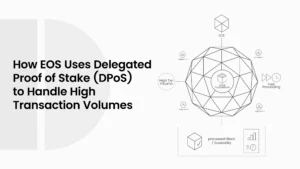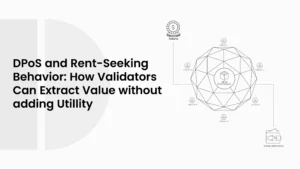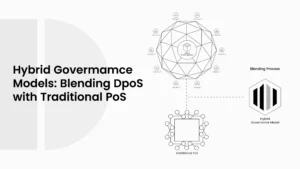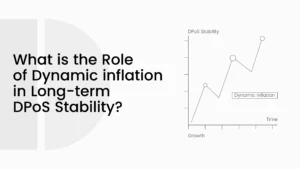DPoS Forks and Upgrades: How Protocol Evolution Really Works
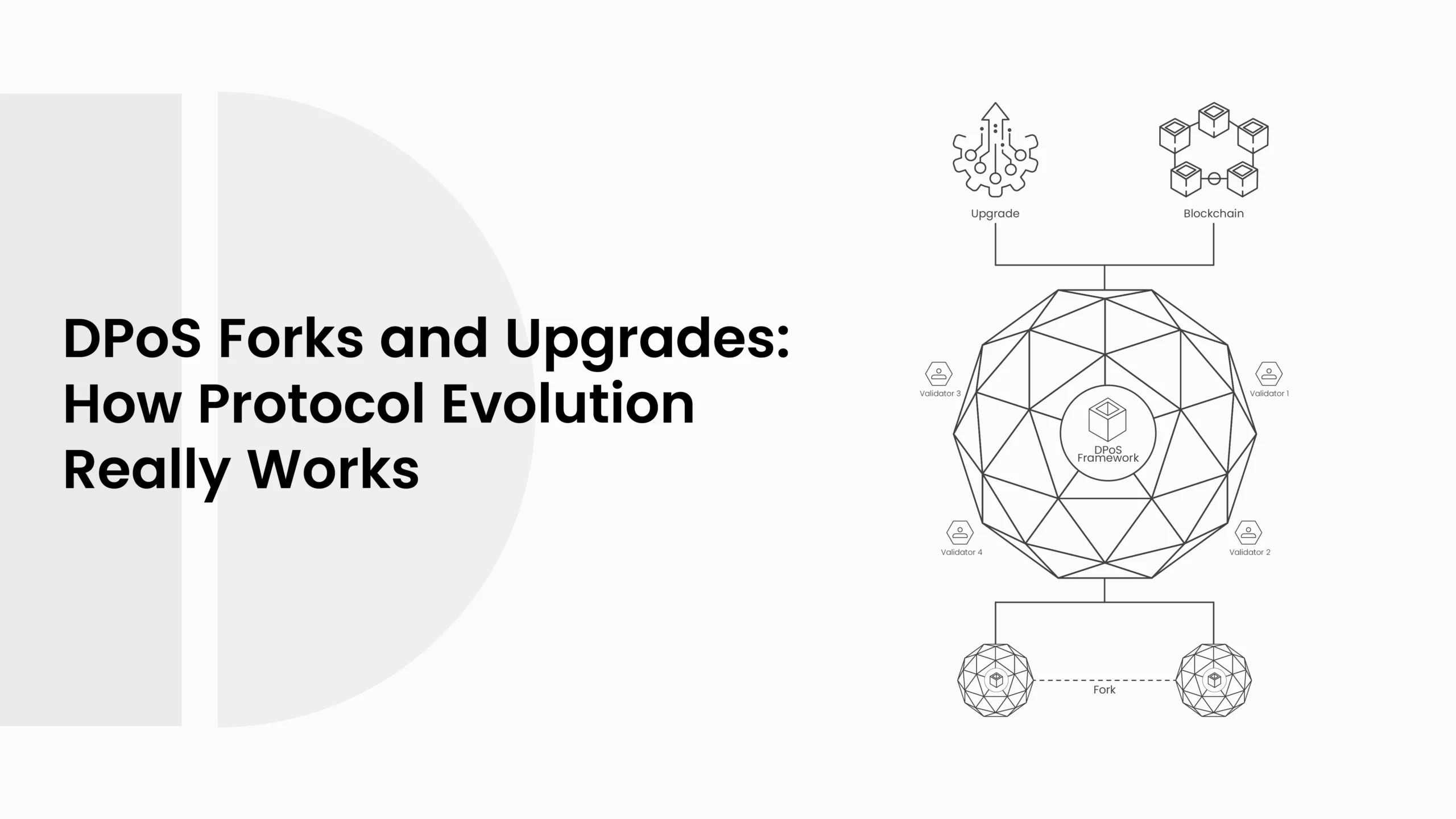
Every blockchain is like a living system. It starts with a set of rules, but those rules cannot stay frozen. New problems come, new ideas arrive, and old code gets outdated. For Delegated Proof of Stake (DPoS) chains, this process of change is even more active because the community votes for delegates, upgrades, and forks can happen fast when the network decides.
- What is DPoS and Why It Evolves
- Basics of DPoS
- Why Protocols Need Change
- Forks vs Upgrades in Simple Words
- Types of Forks in DPoS
- Hard Forks
- Soft Forks
- Accidental vs Planned Forks
- Hard Fork vs Soft Fork vs Upgrade in DPoS
- Why DPoS Forks Happen
- Governance Votes and Disagreements
- Security Fixes and Bugs
- Performance Upgrades
- Political or Community Splits
- How Upgrades in DPoS Work
- Role of Delegates in Approving Upgrades
- Voting Power of Token Holders
- Step-by-Step Upgrade Cycle
- Upgrade Lifecycle in a DPoS Chain
- Case Studies of DPoS Forks and Upgrades
- EOS Forks and Resource Model Change
- TRON Upgrades for High TPS
- Lisk and Sidechain Updates
- Smaller Chains and Community Forks
- Challenges in DPoS Forks and Upgrades
- Centralization Risks
- Voter Apathy
- Security Risks During Forks
- Challenges and Their Real Impact on DPoS Chains
- Mitigation Strategies
- Better Governance Models
- Incentives for Participation
- Strong Upgrade Testing Frameworks
- Community Education and Transparency
- Future of DPoS Protocol Evolution
- AI and Automation in Governance
- Multi-Chain and Interoperability Upgrades
- More User-Friendly Fork Management
- Future Trends in DPoS Protocol Evolution
- Conclusion
- Frequently Asked Questions About DPoS Forks and Upgrades
- What is a DPoS fork in blockchain?
- How are upgrades approved in DPoS?
- What is the difference between a fork and an upgrade?
- Can DPoS prevent chain splits?
- Why do DPoS chains evolve faster than PoW chains?
- Glossary of Key Terms
Forks and upgrades are the tools to evolve. A fork can split the chain into two versions if there is no agreement. An upgrade is a planned step where the community agrees to improve the network without breaking it apart. Both are part of the natural life of a blockchain.
This blog will go step by step. First, it will explain DPoS and why it evolves. Then, everyone looks at the types of forks and upgrades, and the reasons they happen. Plus, it also covers case studies, problems, solutions, and the future. By the end, you will have a clear picture of how DPoS protocols grow and survive.
ALSO READ: The Future of Validator Nodes in DPoS: Hardware, Geography, and Centralization
What is DPoS and Why It Evolves
Basics of DPoS
Delegated Proof of Stake is a way for blockchains to agree on transactions without using heavy mining like Bitcoin. In DPoS, people who hold tokens can vote for special members called delegates. These delegates, sometimes also called block producers or validators, create new blocks and keep the chain running.
Imagine it to be a digital democracy. The voters are the token holders, and the elected leaders are the delegates. When a representative fails to do their job well, a citizen has the power to oust the representative and elect a different one. This system causes DPoS to be quick and economical, as few nodes will require consensus before the addition of a block.
Why Protocols Need Change
No blockchain can stay the same forever. Networks face issues like slow transactions, bugs in the code, or new security threats. DPoS chains also face unique problems like voter apathy (when people don’t vote) or power concentration (when a few big players control most of the votes).
Due to such difficulties, the protocols should be developed. The evolution may be minor improvements, such as an increase in transaction speed, or it may be a significant alteration, such as the distribution of the rewards. Unless such changes are implemented, the network risks losing users and value.
Forks vs Upgrades in Simple Words
There is a need to learn the distinction. When this happens, a fork occurs, and some individuals remain on the old version and others switch to the new one. This may divide the society and make two distinct blockchains. A soft fork is milder; it gives time to old and new rules to co-exist for some time.
An upgrade is smoother. It happens when the delegates and community agree to apply new rules without splitting. In DPoS, upgrades are often easier because voting makes decisions faster compared to proof-of-work systems like Bitcoin.
Types of Forks in DPoS
When people talk about forks in blockchain, it can sound very technical. But really, it is just about rules changing. In DPoS chains, forks can happen in different ways. Some are planned by the community, others happen by accident. Let’s go step by step.
Hard Forks
A hard fork is the biggest type of fork. When the old rules do not conform to the new rules, then it is when the new rules are not compatible with the old rules. When a certain group of individuals complies with the new rules and the rest of the population continues to use the previous rules, the chain divides into two. You now have a pair of blockchains with identical functionality, yet different rules.
In DPoS, hard forks can happen when there is strong disagreement in the community. For example, if delegates and token holders do not agree on how rewards should be shared, one group may push a new version. Hard forks can create innovation, but they can also divide users and hurt trust.
Soft Forks
A soft fork is a lighter change. It is when the new rules still work with the old rules. This means that people who did not upgrade their software can still follow the chain. Over time, most users move to the new version.
Soft forks are often used for smaller changes, like adding new features or improving security. In DPoS, soft forks can be smoother since delegates can enforce the upgrade by majority voting.
Accidental vs Planned Forks
Not all forks are planned. Sometimes, two delegates or groups of delegates produce blocks at the same time. This can cause a short chain split. Normally, the network quickly fixes it, and one chain becomes the “true” one. These are called accidental forks, and they are common in blockchains.
Planned forks, on the other hand, are discussed, voted on, and agreed upon before they happen. These are often part of protocol upgrades, where the chain is designed to change without chaos.
ALSO READ: Learning from Failures: Post-Mortems of Abandoned DPoS Projects
Hard Fork vs Soft Fork vs Upgrade in DPoS
| Feature | Hard Fork | Soft Fork | Upgrade in DPoS |
| Compatibility | Not compatible with old rules | Compatible with old rules | Compatible with old rules |
| Community Impact | Can split the chain into two | Smooth adoption over time | Agreed change, no split |
| Example | EOS resource model changes | Security patch or feature add | TRON voting system update |
| Risk Level | High (chain split possible) | Medium (some confusion possible) | Low (if community supports it) |
| Speed of Adoption | Slow, needs clear choice | Medium, gradual | Fast with delegate voting |
Why DPoS Forks Happen
DPoS blockchains do not fork without a reason. Behind every fork or upgrade, there is always a cause. Some reasons are technical, some are social, and some are even political. Let’s look at the most common ones in detail.
Governance Votes and Disagreements
In DPoS, delegates are chosen by token holders. This allows the community much power; however, it also implies that disputes may occur quite frequently. Without an agreement among the voters and delegates on the manner in which rewards are to be distributed and the number of delegates, the system may divide.
One group may support one version of the code, while another group sticks to the old rules. This type of disagreement is the most common reason behind hard forks. Because DPoS moves fast, decisions can sometimes be rushed, which makes the risk of disagreement even higher.
Security Fixes and Bugs
Sometimes forks happen because of serious bugs. If a bug allows someone to cheat the system or double-spend coins, the developers and delegates must act fast. In these cases, a fork is used as an emergency fix.
A famous example is when chains have rolled back transactions after hacks. In DPoS, it is easier to push such changes because delegates can quickly vote and apply a new version of the code. But the downside is that not everyone may agree with rolling back history, and that can cause a split.
Performance Upgrades
Blockchains need to be fast and cheap to use. When transactions start to get slow or fees start to climb, the community will look for upgrades. Some upgrades are small and can be added without breaking the chain, but some are big changes that lead to forks.
For example, changes to the way resources like bandwidth or CPU are allocated may require deep protocol edits. If everyone agrees, it is just an upgrade. But if people argue over the best model, it may become a fork.
Political or Community Splits
Not all forks are about code. Sometimes they are about people. Communities may split because of trust issues, leadership fights, or different visions of the future. In those cases, one part of the community decides to fork and create its own version of the blockchain.
This has happened many times in blockchain history. The technology may be strong, but if the community is divided, forks are almost impossible to avoid. In DPoS, where community voting is central, political fights can be even more intense.
How Upgrades in DPoS Work
Upgrades in Delegated Proof of Stake are not random. They follow a process. Unlike Proof of Work chains like Bitcoin, where change is slow and messy, DPoS networks can move faster because of the voting system. But even here, upgrades need steps to make sure the network stays safe and fair.
Role of Delegates in Approving Upgrades
Delegates are the backbone of DPoS. They are the ones who produce blocks and keep the chain alive. When a new upgrade is proposed, it is usually tested first by developers. After testing, the upgrade is given to delegates. Delegates then decide if the change should go live.
Because delegates are voted in by token holders, they carry the responsibility to act for the community. If a delegate ignores the wishes of the community, voters can remove them and replace them with someone else. This keeps power balanced.
Voting Power of Token Holders
Token holders are the real decision makers in DPoS. They may not code the upgrade, but they vote for the delegates who will apply it. If the community strongly supports an upgrade, they will vote out delegates who refuse to support it.
This is why DPoS upgrades often feel democratic. Everyone who owns tokens has a say, even if small. The more tokens you hold, the stronger your vote. Some people see this as fair, while others argue it gives too much power to whales. Still, this is how upgrades are approved in practice.
Step-by-Step Upgrade Cycle
Every upgrade in DPoS follows a cycle. It usually starts as an idea, then moves through testing, voting, and finally, the upgrade goes live. This cycle is what keeps upgrades organized.
ALSO READ: Why Delegated Proof of Stake (DPoS) Appeals to Smaller Blockchains
Upgrade Lifecycle in a DPoS Chain
| Step | What Happens | Who Controls It |
| Proposal | Developers or the community suggest a change | Developers, community |
| Testing | The change is tested on private or public testnets | Dev teams, testers |
| Delegate Review | Delegates review and prepare to apply the upgrade | Delegates |
| Community Pressure | Token holders express support or opposition through voting power | Token holders |
| Rollout | Upgrade goes live on the main chain if enough support is present | Delegates |
| Monitoring | The change is monitored for bugs or performance issues | Dev teams, community |
This table makes it easy to see how upgrades flow from idea to reality in a DPoS chain. The key thing is that upgrades are not forced. They go through testing and voting, which makes them smoother than forks most of the time.
Case Studies of DPoS Forks and Upgrades
Talking about forks and upgrades in theory is useful, but real examples help us see how it works in practice. Delegated Proof of Stake chains have already gone through many upgrades and some forks. Each story shows how protocol evolution happens, sometimes smooth and sometimes messy.
EOS Forks and Resource Model Change
EOS is one of the biggest names in DPoS history. When it launched, it promised high speed and zero fees. But over time, the way resources like CPU and bandwidth were managed became a problem. Some users could not get enough resources, while others held too many.
To fix this, EOS went through several upgrades. One major upgrade was the introduction of a new resource model called “PowerUp.” Instead of staking large amounts of tokens forever, users could pay small fees to borrow network resources for short periods. This change required a lot of discussion and testing. Delegates had to apply the upgrade carefully to avoid chain splits.
There were also community-driven forks of EOS, like Telos and WAX, where groups of people decided to take the EOS code and build their own versions. These forks happened because of governance disagreements, proving that social issues are as powerful as technical ones in DPoS.
TRON Upgrades for High TPS
TRON is another big DPoS chain. It focused on fast transactions per second (TPS) and low fees. Over the years, TRON has upgraded its voting system, resource model, and reward distribution.
One important upgrade was to make the energy and bandwidth system more fair. Instead of only rewarding big token holders, TRON adjusted the model so smaller users could also use the network cheaply. This upgrade was driven by community feedback and approved by delegates.
TRON also shows how DPoS chains can roll out upgrades quickly. Because the community votes and delegates apply changes, TRON can test new features and move them to the mainnet in less time compared to older blockchains.
Lisk and Sidechain Updates
Lisk is a DPoS blockchain that focuses on sidechains. The idea was to let developers build their own blockchains connected to the main network. Over time, Lisk had to upgrade its SDK (software development kit) many times to improve tools for developers.
Each SDK upgrade was like a mini-fork because it changed how developers could use the network. If developers did not upgrade, their apps might break. But since these were planned changes, most of them happened smoothly without big splits.
Lisk also showed how long testing phases are needed. Many of its upgrades stayed in testnet for months before going live. This helped reduce the risks of accidental forks.
Smaller Chains and Community Forks
It’s not only big names like EOS and TRON. Smaller DPoS chains have also gone through forks. Sometimes these forks are simple community projects where people copy the code and try to create a new version.
For example, some smaller networks have forked to change how delegates are elected, or to adjust inflation and rewards. These forks often don’t get much attention, but they show how flexible DPoS can be. Even a small group of token holders can push a fork if they disagree with the majority.
Challenges in DPoS Forks and Upgrades
Upgrades and forks may sound simple when explained, but in real life, they come with many challenges. DPoS chains move faster than Proof of Work systems, but speed also brings risks. Some challenges are technical, some are about governance, and some are about human behavior.
Centralization Risks
One of the biggest challenges is centralization. In theory, DPoS is democratic because token holders vote for delegates. But in practice, large token holders (whales) can control a lot of votes. This means the same group of delegates may stay in power and decide which upgrades happen.
If upgrades are controlled by only a few, the system looks less decentralized. This can scare away users who value fairness and openness. It can also lead to upgrades that only benefit the powerful group, not the whole community.
Voter Apathy
Another problem is voter apathy. Many token holders do not bother to vote. They may be too busy, or they may think their small vote does not matter. When only a small percentage of the community votes, the upgrades and forks reflect the views of a minority, not the majority.
This weakens the whole idea of DPoS. A system built on voting cannot work well if most people stay silent. Some chains have tried to solve this with rewards for voting, but voter apathy is still a serious issue.
Security Risks During Forks
When a fork happens, the blockchain becomes more vulnerable for a short time. During this period, attackers can try replay attacks, where they repeat transactions on both versions of the chain. If the upgrade or fork is not coded carefully, users may lose funds or face network downtime.
Even upgrades that do not split the chain can create risks. If the code has bugs or if delegates roll it out too fast, the network may crash. This is why strong testing is needed before any big upgrade.
ALSO READ: Bridging Governance: How DPoS Chains Can Integrate with DAOs
Challenges and Their Real Impact on DPoS Chains
| Challenge | What It Means in Practice | Real Impact on the Chain |
| Centralization Risks | Whales control votes and keep the same delegates in power | Reduces trust, creates unfair upgrades |
| Voter Apathy | Low community voting turnout | Upgrades reflect minority, not majority |
| Security Risks | Replay attacks, bugs during upgrades | Possible loss of funds or network crashes |
| Political Conflicts | Community disagreements over vision | Hard forks, splits into new chains |
Mitigation Strategies
Even though DPoS forks and upgrades face many challenges, the good news is that there are ways to reduce these risks. Different chains have tried different solutions, from better voting models to more careful testing. These strategies do not make the problems disappear, but they make upgrades smoother and forks less dangerous.
Better Governance Models
One solution is to improve governance itself. Some DPoS chains are testing models like quadratic voting, where the cost of voting grows as you use more votes. This stops whales from dominating decisions with huge token bags.
Other chains use reputation systems, where delegates must build trust over time. If they behave badly, they lose reputation and voting power. These models make governance more fair and spread influence more widely.
Incentives for Participation
To fight voter apathy, chains add rewards for token holders who vote. For example, some networks give a small percentage of inflation or staking rewards only to people who actively vote in governance.
This creates a stronger reason for everyone to take part. If people know their vote gives them extra tokens, they are more likely to join in. Over time, this can increase turnout and make upgrades more representative of the full community.
Strong Upgrade Testing Frameworks
Technical risks are managed with testing. Before any big upgrade goes live, developers run it on testnets. A testnet is like a copy of the blockchain where mistakes don’t cost real money. Delegates and developers can try the new rules, look for bugs, and stress test performance.
Some chains even use bug bounties, where they pay outside developers to find mistakes before upgrades are applied. This makes the code safer and reduces the chance of crashes or attacks during forks.
Community Education and Transparency
Another strategy is keeping the community informed. Clear announcements, open discussions, and transparent timelines make upgrades less scary. If token holders know exactly what is changing and why, they are less likely to panic or resist.
Education also reduces political splits. When everyone has the same facts, it is easier to agree on the best path forward.
Future of DPoS Protocol Evolution
DPoS blockchains are still young compared to older systems like Bitcoin or Ethereum. This means the way they handle forks and upgrades will continue to change. The future looks more advanced, with technology and governance blending in new ways. Here are some trends people can expect.
AI and Automation in Governance
In the future, Artificial Intelligence could play a role in upgrades. AI can study network data, predict risks, and even suggest changes. Instead of waiting for humans to argue, AI could provide fast recommendations that delegates can act on.
Some projects are already exploring AI-powered DAOs (Decentralized Autonomous Organizations) where machine learning helps with voting and upgrade planning. This could make governance faster, but it also raises questions about trust in machines.
Multi-Chain and Interoperability Upgrades
Another trend is interoperability. DPoS chains will not survive alone; they need to connect with other blockchains. Future upgrades will focus on cross-chain bridges, shared security, and multi-chain ecosystems.
For example, a DPoS chain may upgrade to allow tokens to move freely between it and Ethereum or Cosmos. These upgrades are complex, but they will make DPoS more useful in the broader blockchain world.
More User-Friendly Fork Management
Today, forks can confuse users. They may not know which chain to support, or they may lose tokens in the process. In the future, DPoS chains will likely develop user-friendly fork tools.
These could include automatic wallet updates, clear token swap systems, or even mobile apps that guide users step by step. The goal will be to reduce fear and make forks less damaging for regular users.
Future Trends in DPoS Protocol Evolution
| Future Trend | What It Means | Possible Impact on DPoS Networks |
| AI and Automation | AI tools predict upgrades and risks | Faster, smarter governance decisions |
| Multi-Chain Interoperability | Bridges between DPoS and other blockchains | More adoption, stronger ecosystems |
| User-Friendly Fork Management | Tools to help users during forks | Less confusion, safer token transitions |
| Reputation-Based Voting | Voting is tied to trust and history | Reduces whale dominance, fairer upgrades |
The future of DPoS will likely combine technology, community, and governance into smoother systems. Upgrades will become faster, and forks will be less painful. If these trends continue, DPoS chains could become leaders in blockchain evolution.
Conclusion
Delegated Proof of Stake blockchains are always evolving. They cannot stay frozen because new problems, new users, and new ideas keep coming. Forks and upgrades are the tools that allow DPoS to survive and grow. Sometimes these changes are smooth upgrades where everyone agrees, and sometimes they are hard forks that split the chain in two.
This blog saw that upgrades follow a cycle: proposal, testing, voting, and rollout. Plus, it also looked at real examples like EOS, TRON, and Lisk, which show how protocol evolution happens in practice. At the same time, challenges like centralization, voter apathy, and security risks remain serious. But with strategies like better governance, incentives for voting, and strong testing, these risks can be managed.
The future looks even more interesting. AI may guide upgrades, multi-chain connections will expand use cases, and user-friendly fork tools will make the process easier for everyone. DPoS will keep changing, but one thing is clear: its strength is in evolution. Without forks and upgrades, no blockchain can survive.
Frequently Asked Questions About DPoS Forks and Upgrades
What is a DPoS fork in blockchain?
A DPoS fork happens when the blockchain rules change. If the new rules are not compatible with the old ones, the chain splits in two. This is called a hard fork.
How are upgrades approved in DPoS?
Upgrades are proposed by developers, tested, and then applied by delegates. Token holders influence the process by voting for delegates who support or oppose the change.
What is the difference between a fork and an upgrade?
A fork can split the chain into two versions, while an upgrade is a smoother change agreed on by the community that does not split the chain.
Can DPoS prevent chain splits?
Not always. Even with voting and planning, disagreements can still lead to hard forks. But upgrades reduce the chances of splits compared to unplanned forks.
Why do DPoS chains evolve faster than PoW chains?
Because DPoS uses voting instead of mining, changes can be made more quickly. Delegates can apply upgrades faster, while PoW systems take longer to reach agreement.
Glossary of Key Terms
- Fork: A blockchain split that creates two versions of the chain with different rules.
- Upgrade: A planned change in the blockchain that improves features without splitting the chain.
- Delegate: A block producer elected by token holders in a DPoS system.
- Governance: The decision-making process in blockchain, often involving votes from token holders.
- Testnet: A copy of the blockchain used for testing upgrades before going live.
- Whale: A large token holder with strong voting power.

